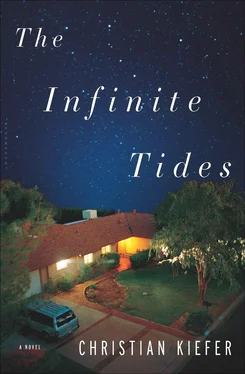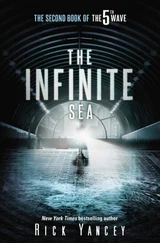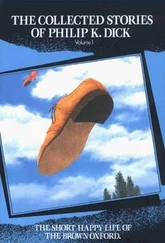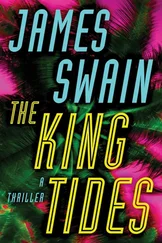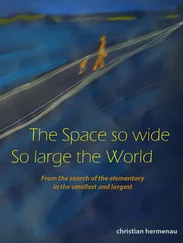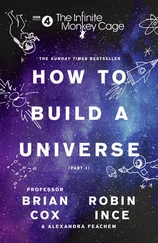It was interesting but nothing more than that because he still viewed it as a kind of game or diversion. He sat with the book again and worked out a few rows of numbers with his calculator and by hand, plotting them on a sheet of graph paper, moving on to another sheet when that first was full and continuing to graph. At some point he started the computer working on another algorithm, returning then to the pad of paper. The calculations were easy enough but the numbers that stacked themselves in their columns on the page made little sense to him and so he continued to work, to calculate. Iterated numbers of no central relation and a graph that appeared as if peppered with random points of no particular order. He could see no shape there, no sense of direction or method by which a curve or parabola or some other line could cut through the points.
He continued to work, absorbed now, not understanding, still feeling like he was missing some essential step or that he was performing the task somehow incorrectly because he had seen the image on the screen and knew there was order, that somehow the rows and rows of numbers would repeat to continue the motion of a particular shape, that such a repetition must be periodic, predictable, because the algorithm was folding back on itself to create the image. But the numbers did not seem to repeat, even though he already had a list of at least a hundred calculations. He returned to the book several times to make sure he was working through the process correctly, confirming that indeed he was, and during one of these confirmations he paged through to the center of the volume, there finding a small collection of color plates, not only of fractals — the shapes were called fractals, he had already learned — but of art as well: the beautifully painted waves of Hokusai, a pencil sketch of roiling clouds and water by Leonardo da Vinci, a series of photographs of clouds in a yellow sky, of moss on a gray stone. Self-similar shapes. Snowflakes that appeared finite to the human eye and yet were infinite in circumference. Not the numbers and yet indeed the numbers.
Of course he knew that numbers — all numbers — were meant to represent the physical world. That was their point and their purpose. But these numbers, these rows upon rows of numbers, described nothing he could point to and yet, eventually, when they reached the tens of thousands, they would apparently build into images of intricate and indeed infinite beauty: shapes nesting in secret within other shapes, order from what, to his eye, continued to look like chaos, the numbers drained even of the colors he had always seen them in, their forms now gray and lifeless.
He was so absorbed that when his mother knocked on his door he did not at first understand what the sound could be. Then she said, the door still closed, “Honey, it’s about time to come down for breakfast.”
“Breakfast?” he said. “OK.”
He looked up from the books and papers, looked to the window where the first gray light of dawn was filtering through the ash trees, and then to the pages around him, sheet upon sheet filled, each and every one, with row upon row of numbers. He had stopped trying to graph the information at some point during the night, letting the computer’s concurrent tabulations do that work for him, and now he went to the screen. Upon its lit rectangular surface was displayed a filigreed shape not unlike a beetle, a shape generated by the same numbers he had been working with on the bed, numbers he returned to and looked at in confusion for they held within them no sense of order. No sense of order at all.
He went to school that day and when he returned home he immediately went back to work on the same problems, once again neglecting to sleep, eating only because his mother called him down to the kitchen and then bolting his food, claiming he had homework to complete, that he was working on a project. He could see the numbers upon the page, hundreds of them, and they all seemed to have deserted him, as if they had gone inexplicably silent all at once. Mute. At yet he could see them, could move them and could reorder them and so he tried to make sense of whatever system they represented, for there was always the fact of the image itself, the graphed results of the algorithm, but the individual numbers did not seem to hold any relation. What he saw on the page was stochastic, chaotic. What he saw in the image, in the graphed results, was intricately organized and staggeringly beautiful.
By morning he was so utterly exhausted that his mother took his temperature and told him that he needed to remain home from school, a decision he protested feebly and then returned to his room only to awake in the late afternoon with papers and pencils and calculator strewn around him and the colorless home computer still chattering upon his desk: the beetled screen more detailed now, lightning extending from the edges of the shell as if reaching out into the white space beyond the limits of the graph, perhaps reaching into the room itself.
He returned the books to the library a few days later but the aftereffects remained with him for months and even years to come. In some ways he could trace his desire to become an astronaut to those two days where he seemed to fall down some mathematical wormhole, or rather not the desire to become an astronaut — he had been calling that his goal since he was in grade school — but the development of that goal as his singular focus. He could still feel the taste of those days upon his lips, the flavor of metal, the hint of rust on his tongue. He might have turned directly toward the abstract, might have pushed himself to better understand what was, in essence, the first and only mathematical encounter he had failed to understand. It was certainly his immediate thought to do so, because every problem had a solution. That was the fundamental rule of the numbers, the only rule that actually mattered. Everything could be solved. Everything. Why develop an unsolvable mathematics to describe something as intangible as beauty itself? What purpose could it serve?
The truth was that even though he was inexplicably drawn to that beauty, the very idea of it terrified him because it confused what he had always understood as the purpose of the numbers themselves: fixedness, location, direction, force, mass. His ideas were of sharp angles, clear divisions, straight lines, elegant clean pistons, gears that flowed into each other without effort, jet propulsion, heat diffusion, power, energy. Perfect machines. Perfect, perfect machines. That was math. That was what the numbers had always been for and any other purpose or function they might have served was irrelevant. The numbers resolved into an answer, even if that answer was complex, and therefore a problem that could not be solved was not a problem at all. It was something else. A distraction. A mistake. An error.
He would tell himself over and over that he wanted to become an astronaut because of the challenge and the pinnacle that this achievement would represent but he knew that there was a component of his desire that this explanation did not reach, for of course he could just as actively work on mathematics without becoming an astronaut. But after the fractals there remained within him a source of gravity he had never conceived of or comprehended, a force that seemed to pull at him from space, from the chaos itself, from the fractal and crystalline darkness that existed everywhere beyond him, as inexplicable and indomitable and infinitely beautiful as the pull of life and death itself. And yet he remained as practical as he ever had been, perhaps even more so, and he would take that practicality with him to spin at the fringe of whatever mankind did not know, would probably never know, about the whole of the universe outside Earth’s orbit, as if the abyss itself could be placed in a frame and as if such a framing would make it easier to understand. These thoughts not even conscious and yet present nonetheless.
Читать дальше
